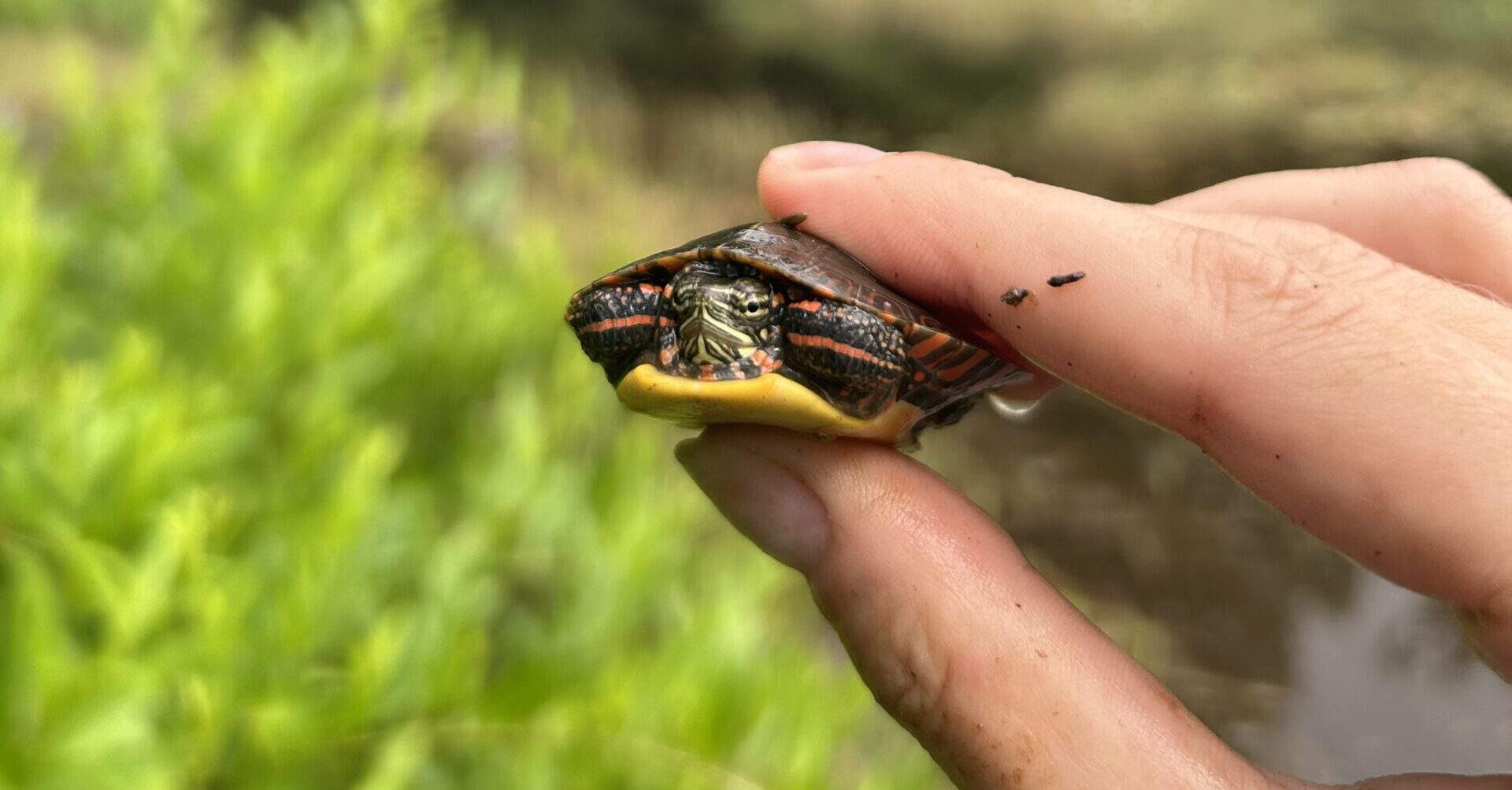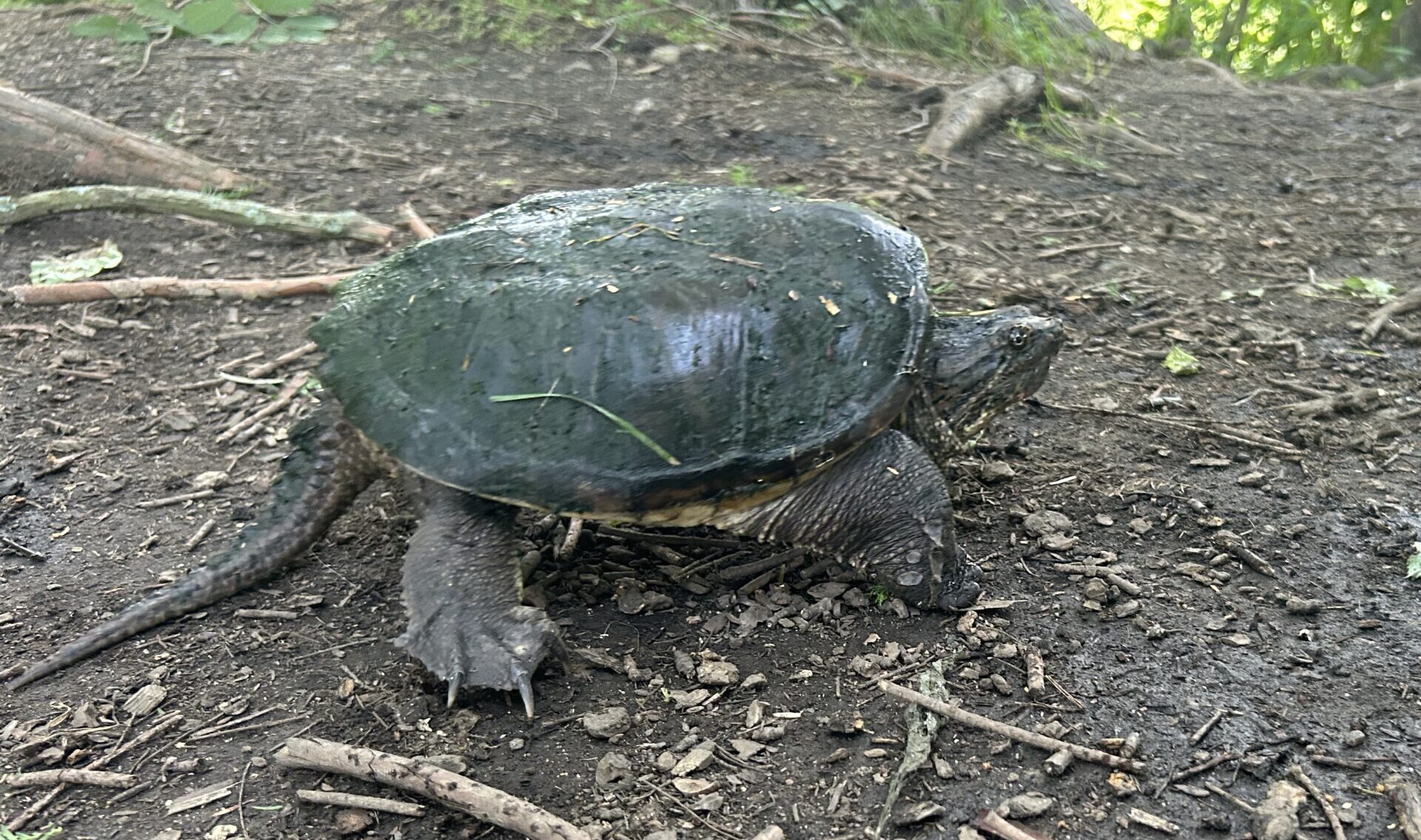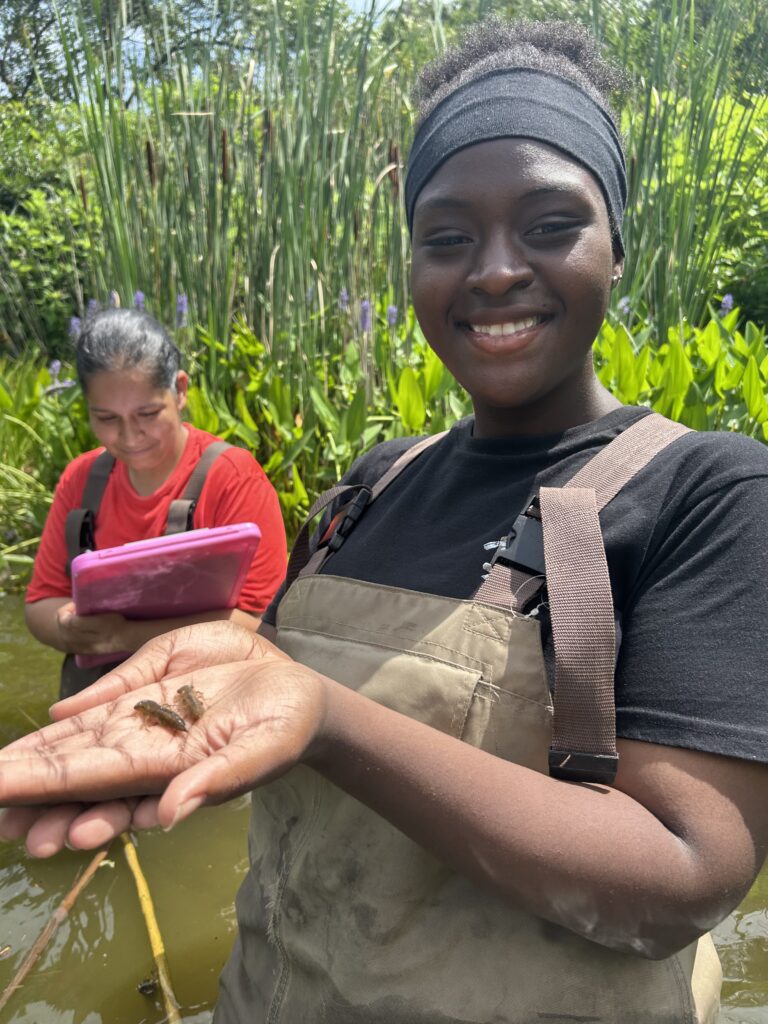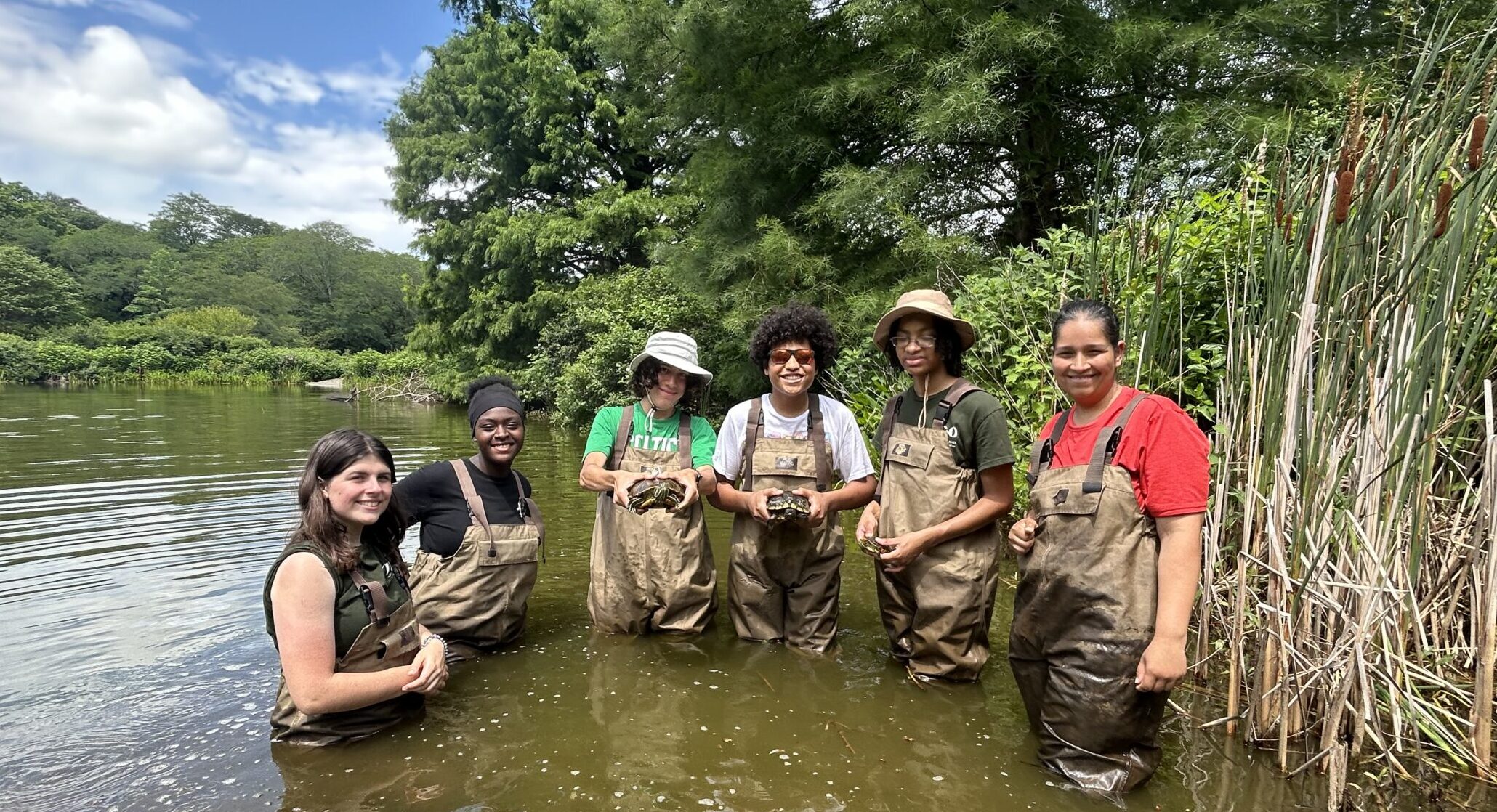For six consecutive summers, ZNE conservation biologists have donned their waders and ventured into the ponds of the Arnold Arboretum of Harvard University to survey aquatic biodiversity. This ongoing collaboration has provided invaluable insights into urban wildlife populations and the health of these unique ecosystems. If you’re curious about how this partnership began, check out our original post: Partner Spotlight: Arnold Arboretum.
This year, our turtle count continues to grow, with over 80 unique individuals now documented across the Arboretum’s three ponds. Painted turtles remain the most abundant species, even though we only encountered one new individual this season. That particular turtle was a memorable find—small enough to fit comfortably in the palm of my hand.

This second-year painted turtle marked our 45th unique individual recorded at the arboretum. At this age, they still display distinct annuli on their plastron—growth rings that help us estimate their age. This quarter-sized friend tipped the scales at just 16 grams, only slightly heavier than a tablespoon of sugar!

Snapping turtles follow in abundance, with more than 30 individuals recorded over the years. Their population size often surprises community members, especially given their impressive size and reputation. While we didn’t identify any new snapping turtles this year, we did reconnect with a juvenile we hadn’t seen since our very first survey—a welcome reunion.
We also added two new individuals to our count of slider species. Though non-native, sliders continue to appear in the ponds, bringing the total to 12. These turtles are almost certainly former pets—or descendants of pets—released into the wild once their novelty wore off. Their long lifespans and specific care needs often lead to abandonment, serving as a reminder of the importance of responsible pet ownership.
Beyond turtles, our surveys also involve trapping and identifying other aquatic species—many of which are often overlooked. These include fascinating invertebrates like waterscorpions (Ranatra fusca), backswimmers (Notonecta unifasciata), and dragonfly nymphs, the flightless juvenile stage of dragonflies.


One of the joys of working in the Arboretum is its proximity to Franklin Park Zoo—just two miles away. This summer, the ZooTeens joined us again, gaining hands-on experience in field conservation. These teens shadowed our trapping and data collection efforts, learning about turtle ecology and contributing to our research.

As we wrap up our sixth year of surveys, we’re proud of the data we’ve collected, the species we’ve documented, and the young conservationists we’ve inspired. The Arnold Arboretum continues to be a living laboratory for urban biodiversity—and we’re excited to see what next summer brings.
